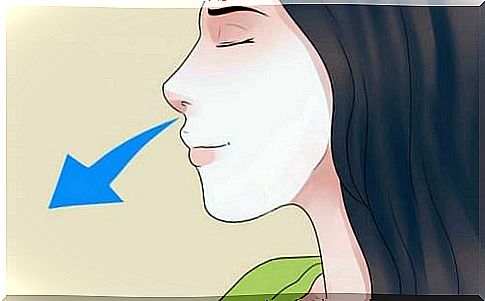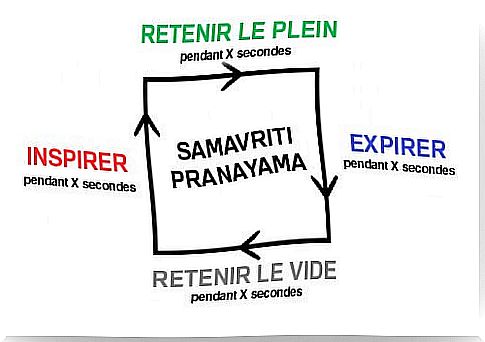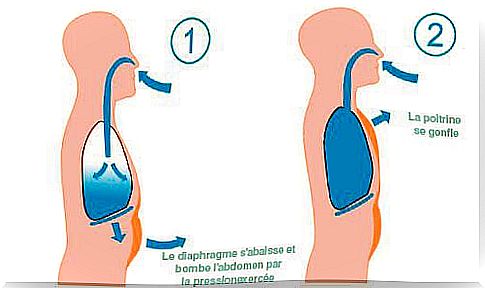Discover 4 Effective Breathing Techniques To Combat Stress
Even if at first it may seem a little complicated, with practice, we manage to control the rhythm of the breaths and it becomes essential to relieve stress, quickly and easily.

Did you know that when we are faced with a stressful situation, we breathe faster and in a haphazard way? Breathing only accentuates this state.
Both stress and anxiety are survival mechanisms whose purpose is to “invite” us to flee, to escape us far from this place that our brain interprets as harmful or dangerous.
On the other hand, you should know that the nervous system and the sympathetic system react to this type of emotion in a very intense way.
Hence the fact that the heart accelerates, that the pulsations increase and that we breathe in a not harmonious way, which increases the risk of suffering from heart attacks, angina pectoris or strokes etc.
Let us not forget that bad breathing results in poor oxygenation of our organs, which therefore involves dangers and consequences.
We have to lower the pace. We have to slow down, better manage our emotions and learn to breathe correctly.
Because even if you don’t really believe it, to breathe well is to live well.
Here we teach you four techniques that can help you.
1. “Square” breathing

“Square” breathing or “s amavriti pranayama” is the simplest of all.
It can be done in bed and 20 minutes before going to sleep: it helps us relax and achieve deep and restorative rest.
We explain how to do it.
Steps for practicing square breathing
- Sit on the bed with your back straight and legs crossed.
- Breathe deeply for 3 minutes and try to relax.
- Now breathe in for 3 seconds, hold the air for another 3 seconds and finally breathe out the air for another 3 seconds.
- Rest.
- Then repeat the same series, but this time increase the time to 4 seconds (inhale, hold, exhale).
- You can repeat this same cycle until you reach 7 or 8 seconds. It all depends on your experience and your personal characteristics.
2. Abdominal breathing

What we do during square breathing is inflate the chest.
Now with abdominal breathing we have a new goal. Focusing our breathing on the diaphragm, a very effective technique for dealing with stress, contained tension and anxiety.
Steps to Perform Abdominal Breathing
- Lie down on the bed or on a comfortable floor mat.
- Put one hand on your chest and the other on your stomach.
- Take deep air through your nose for 3 seconds.
- You should notice that your belly swells and the upper part of your chest stretches.
- Now, slowly breathe out for 4 seconds.
The ideal is to carry out 10 very slow breaths while concentrating above all on this “magic” zone: the diaphragm.
3. Alternative nasal breathing
Alternate nasal breathing might seem a little weird to you if you’ve never had it before. The ideal is to practice it a little each day to notice its progressive benefits.
When you get used to it, you will notice two things:
- First of all, it will help you channel and release stress.
- Then, it will allow you to focus and focus your attention on the here and now.
Steps for practicing alternative nasal breathing
- Sit comfortably, but with your back straight.
- Relax for a few minutes.
- Then put your right thumb on your nose to block the right nostril.
- Take deep air through the left nostril. Very simple.
- Once you have reached your maximum inhalation and can no longer breathe in any more air, close that left nostril with the right ring finger.
- Then breathe out through the right nostril.
- Do the same thing again but on this side, that is to say that once you have taken the maximum amount of air in the right nostril, close it and exhale the air through the left nostril.
It is possible that at first, the exercise seems complicated to you because you will have to be careful to plug one nostril and to open another one each time. But, as you get used to it, the exercise will find its rhythm and become very relaxing.
4. Coherent breathing
Coherent breathing is another technique for channeling stress that requires a little practice and patience. You can test it and add it to your skills.
Once you get it under control, your whole body will reap its benefits.
- Coherent breathing involves breathing 5 times per minute.
- This optimizes the heart rate and relaxes the nervous system. It’s a sensational way to channel tension.
How to practice coherent breathing?
- Sit with your back straight.
- Put an alarm clock in front of you.
- The goal is to inhale and exhale 5 times for one minute.
- First test your ability to control your breathing.
- If you’re having trouble distributing those breaths throughout the minute, start with 6 or 7 per minute.
The ideal is still to achieve 5 breaths for a minute. When you get there, you’ll feel a lot better.









